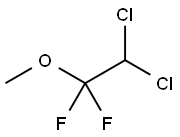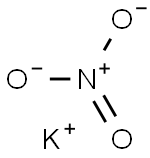F715923
2,2-Dichloro-1,1-difluoroethyl methyl ether , 97 , 76-38-0
Synonym(s):
2,2-Dichloro-1,1-difluoro-1-methoxyethane;hMOF;KAT8;MOF;MYST1
CAS NO.:76-38-0
Empirical Formula: C3H4Cl2F2O
Molecular Weight: 164.97
MDL number: MFCD00040144
EINECS: 200-956-0
| Pack Size | Price | Stock | Quantity |
| 5g | RMB2640.00 | In Stock |
|
| 25g | RMB6056.00 | In Stock |
|
| others | Enquire |
Update time: 2022-07-08
PRODUCT Properties
| Melting point: | -36°C |
| Boiling point: | 103 °C |
| Density | 1.4262 |
| refractive index | 1.386 |
| Flash point: | 37°C |
| storage temp. | -70°C |
| solubility | Chloroform (Sparingly) |
| form | liquid |
| color | Clear |
| biological source | rabbit |
| Water Solubility | Miscible with alcohol, acetone, chloroform, ether, fixed oils and benzene. Immiscible with water. |
| Merck | 14,5994 |
| BRN | 1737766 |
| Exposure limits | No exposure limit is set. Based on comparison with related compounds, a TLV-TWA
of 675 mg/m3 (100 ppm) is recommended. |
| Stability: | Stability |
| CAS DataBase Reference | 76-38-0(CAS DataBase Reference) |
| EPA Substance Registry System | Methoxyflurane (76-38-0) |
Description and Uses
Methoxyflurane, 2,2-dichloro- 1,1- difluoro-1-methoxyethane,is a colorless liquid with a fruity odor. It is produced industrially by the addition of methanol to 1,1-dichloro- 2,2-difluoroethylene in the presence of sodium methoxide .
Methoxyflurane is used as a clinical anesthesia (inhalation).
Safety
| Symbol(GHS) |   GHS02,GHS07 |
| Signal word | Warning |
| Hazard statements | H226-H319-H341 |
| Precautionary statements | P210-P241-P308+P311 |
| Hazard Codes | Xi |
| Risk Statements | 10 |
| Safety Statements | 23-24/25 |
| RIDADR | 3271 |
| OEL | Ceiling: 2 ppm (13.5 mg/m3) [60-minute] [*Note: REL for exposure to waste anesthetic gas.] |
| RTECS | KN7820000 |
| Hazard Note | Irritant |
| HazardClass | 3 |
| PackingGroup | III |
| HS Code | 2909191800 |
| Hazardous Substances Data | 76-38-0(Hazardous Substances Data) |
| Toxicity | One of the most potent of the inhalational anesthetics, having a very high blood-gas partition coefficient and low vapor pressure at room temperature. Methoxyflurane is metabolized to a great extent (about 50-70%) in the liver and, as a consequence, there may be release of high concentrations of fluoride, sufficient to exceed the threshold for renal damage. Its use for sustained anesthesia is limited because of this renal toxicity and was discontinued around 1980. |



